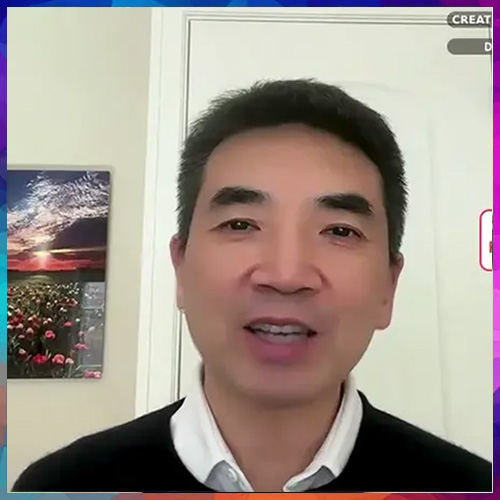
Asoke K. Laha
President & MD, Interra IT
Finally, it is out – to be precise on 30th June, 2017 at midnight, when the whole nation was seemingly glued to the TV or mobile screens. GST is said to give us economic freedom and help us to treat the entire country as a single economic contiguity. There can be differing views and perceptions. I do not want to stoke a debate, except by telling that, as an entrepreneur, GST will influence how I do business, how I plan it, how I calculate the indirect tax that I pay to the government and how I earn credit for the taxes that I have paid to the government.
Undeniably, the launch of GST, to me, signifies a new thing. That has nothing to do with the slogan one India one tax or one India one market. Presumably, when GST becomes fully matured and is accepted by the people to whom it is meant, there may be a marked shift in the business operations. It seeks to subsume all indirect taxes that we pay at central, state and local levels into a single rate or two. That will have a great positive spinoff since we are sure of our tax burden, how it is collected and how it is appropriated.
What is GST?
If you ask me how many in India have heard about GST, I would say hardly there is anyone who has not heard about it. If you ask me how many would know about how it operates, I would say hardly there is anyone who knows how it will get rolled out, initial hitches, how these would be resolved, etc. Nobody should be blamed for that. In a country where more than 1.3 billion live, where taxes particularly indirect taxes are to be paid from birth to death, several times in a day, how can we predict what challenges the tax structure pose. Everyone knows – government, tax experts, traders, industrialists and man on the street – that at the implementation stage there will be problems. Should that be a limiting factor for introduction of GST or should it be delayed for quite some time?
Is it a simple tax structure? Again, my take is that it was conceived as a simple one and many optimistically thought, to begin with, it will have only two or maximum three slabs of moderate rates. What was originally conceived as ideal one, had to be considerably watered down due to political pressure from the states. The Centre had taken three categories of goods from the purview of GST, viz. alcohol, petroleum products and tobacco. These goods are generally referred to as non-merit goods and the state revenue flows mainly from these heads. To that extent, the present GST is truncated and nobody should be blamed for that. Had the Centre insisted on the original plan, GST would have been a non-starter.
After a lot of deliberations and consultations with stakeholders, India has chosen the Canadian model of GST – of course, with some adaptations. It has three components – CGST (Central Goods and Services Tax), which will be collected by the Central Government on sales of goods and services. The other one is SGST (State Goods and Services Tax), which will be collected by the respective state governments on sales of goods and services and the third one is IGST (Inter-state Goods and Services Tax), which will be collected by the Central Government on the inter-state transaction of goods and services. The collected IGST revenue will be distributed between the states, as per the view of the proposed GST Council. To compound further, there are five different rates pegged at 0%, 5%, 12%, 18% and 28%, besides exempting three items like alcohol, tobacco and petroleum products, which will continue to remain with the state governments. They are the major sources of income for the state governments. If you feel that the GST on the ground is a compressed and compromised one, you are not far off the truth. Yet, one has to reconcile the political pressure that the Central Government has undergone to cobble together differing views.
We have to rough up the initial glitches of the GST. The base of the taxpayers is larger than what it has been earlier. Also, the GSTN (Goods and Services Network) has to be tested and validated. The digital network has to support registrations, return filing, tax payments, reconciliation, IGST settlements, etc. For an effective GST to operate, tax exemptions and presence of multiplicity of rates should be subsumed into bare minimum. Indeed, there is a lot of spadework still to be done. Granting time to the authorities to streamline things and iron out glitches is one thing. Equally significant is compliance. We should develop faith in the system. The human ingenuity may force people to find newer ways to dodge the taxes. If anybody does so, it should attract severe penalty. At the same time, authorities should be considerate and minor aberrations should be condoned and resurgence of inspector raj as it has been feared in some quarters should be shunned since business cannot grow in a situation where there is mistrust and vilification.
It is instructive to learn things from the experience of others. More than 140 countries have implemented GST in one form or the other. Barring the United States, most of the developed world has a form of indirect taxation similar to that of GST. Some of these countries have faced stiff problems in the initial stages. We have to learn what those glitches were to preempt occurrences of such things in our system.
Undoubtedly, the introduction of GST has pitched up the expectations of the general public. They expect that the prices will come down, tax rates will be lower, life will be much easier, etc. Bereft of occasional sound and noise aired from different sources, particularly from the small- and mid-sized companies taking up job works, industry in general has welcomed the introduction of GST. They feel that the cascading effect of taxes, which has played havoc on the growth of the economy, will be a thing of the past, since the industry will be allowed to take credit on input tax paid so that nothing is added to the basic tax.
Yet, there are many incongruities to be addressed. Let us take a few examples how such anomalies will get manifested. In the case of an airline ticket, if I have to travel from New Delhi to New York, a direct flight will cost me dear since the GST will be on the entire ticket. On the other hand, if I take a hoping flight from New Delhi to Dubai and onwards to New York, I save tax since in the second leg of my travel, I need not have to pay any GST. Does it mean that the government is inducing the travellers to opt for hoping flights to save money? Still, the clarity has to emerge how the exporters have to be insulated from paying tax since the general principle is not to export tax. The suggestion made by various authorities is that let the exporter first pay the input tax and later he can claim the refund. This is going to be a cumbersome procedure since money will be locked up and the exporter will be subjected to some harrowing experiences.
In summation, I might say that the government, after a long wait, has shown the political will at last to roll out GST. It was not at all an easy task and a lot of political tightrope walking had to be resorted to achieve that feat. That does not mean that the journey from now onwards will be easy, particularly when the expectations are high amongst all stakeholders. There is a long way to traverse before we can pat our back.
See What’s Next in Tech With the Fast Forward Newsletter
Tweets From @varindiamag
Nothing to see here - yet
When they Tweet, their Tweets will show up here.





























